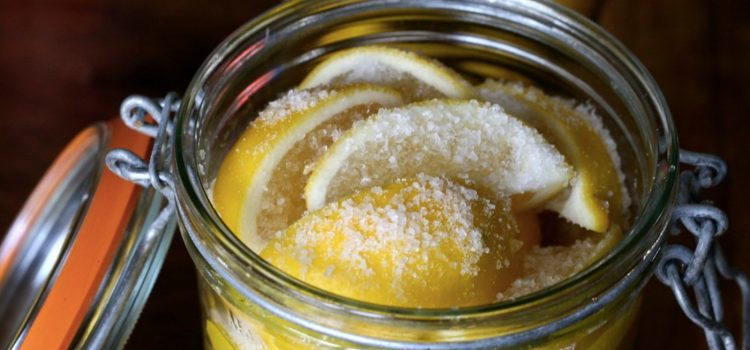

This article is an excerpt from the Shortform book guide to "Salt" by Mark Kurlansky. Shortform has the world's best summaries and analyses of books you should be reading.
Like this article? Sign up for a free trial here.
What are examples of salting food for preservation? Why is salt used to preserve food?
In his book Salt, Mark Kurlansky gives two methods to preserve food with salt. These two methods are curing and pickling.
Keep reading for salting food preservation examples that have been used throughout history.
Preserving Food
According to Kurlansky, for most of history, salting was the primary method of preserving food. Only recently in modern history have we reduced our dependency on salt preservation, due to innovations such as refrigeration, freezing, and canning.
(Shortform note: While salt is no longer the primary way of preserving food, it’s still used as one of several preservatives in many shelf-stable foods. Studies reveal that when food manufacturers reduce the salt content of processed meat and cheese, it’s more likely those foods will carry bacteria responsible for botulism (a life-threatening illness that attacks your nervous system).)
Here, we’ll explore two salting food preservation examples prior to these innovations: curing and pickling.
Preservation Method 1: Salt Curing
First, Kurlansky explains that when you salt-cure food, you surround it with salt and give the salt time to penetrate the food. Salt prevents food from spoiling in two ways: 1) it kills bacteria, and 2) it dehydrates the food, preventing more bacteria from growing. Bacteria thrive in moist environments, such as the flesh of animals and fish.
According to Kurlansky, people throughout history have depended on salt-cured meat and fish. The ancient Egyptians were likely the first to cure fish in salt. This helped them survive when the Nile flooded less than usual and failed to irrigate enough crops. In medieval Europe, salt-cured fish—especially salted cod—prevented famine and sustained armies. More specifically, the Basques, whose medieval empire stretched across modern-day Spain, discovered that cod is ideal for salt-curing: It cures rapidly because it’s low in fat.
(Shortform note: These traditions of salt-curing meat continue today. In Egypt, salted fish remains an important menu item when Egyptians celebrate Sham El Nessim, a national holiday that marks the start of spring. In the Basque region of Spain, salted cod remains popular—but it’s typically not eaten in its dried form. Cooks buy it from the market fried and salted, then they soak it for a couple of days to rehydrate it before incorporating it into dishes.)
Preservation Method 2: Pickling
Whereas throughout history, meat, cheese, and fish were mostly salt-cured, vegetables and fruits were mostly pickled. Kurlansky explains that when you pickle food, you allow it to age and ferment in the absence of oxygen (typically in a jar). Fermentation is when the sugars in food break down, producing lactic acid—a natural preservative. Salt plays a crucial role in this process: When you add salt flakes or brine (salty water) to the pickling jar, it prevents yeast from forming. Yeast produces alcohol, not pickled food.
(Shortform note: While Kurlansky uses the terms “fermentation” and “pickling” interchangeably in his book, others insist that these are two different processes. According to one expert, pickling and fermentation both involve salt as a preservation agent, but these two processes produce a sour flavor for different reasons. Pickled foods (such as pickled onions) are sour because they’re typically produced by submerging food in an acidic solution made of salt, water, and an acid such as vinegar. By contrast, fermented foods (such as kimchi) are sour because during the fermentation process, lactic acid bacteria that naturally exist in the food produce a sour flavor.)
According to Kurlansky, throughout history, people have enjoyed and depended on pickled vegetables and fruits. The ancient Chinese were the first to pickle food, specifically soybeans and other vegetables. In ancient Rome, the working class consumed many olives, which are pickled in brine. Throughout medieval Europe, people ate sauerkraut (pickled cabbage). It provided them with nourishment throughout long and harsh winters. It was also a staple on European ships because its high vitamin C content prevents scurvy, a painful disease (caused by vitamin C deficiency) that involves bleeding gums and fatigue.

———End of Preview———
Like what you just read? Read the rest of the world's best book summary and analysis of Mark Kurlansky's "Salt" at Shortform.
Here's what you'll find in our full Salt summary:
- The role salt played in driving innovation, building empires, and provoking rebellions
- Why salting food isn’t just about improving its flavor
- How salt played an important role in several independence movements






